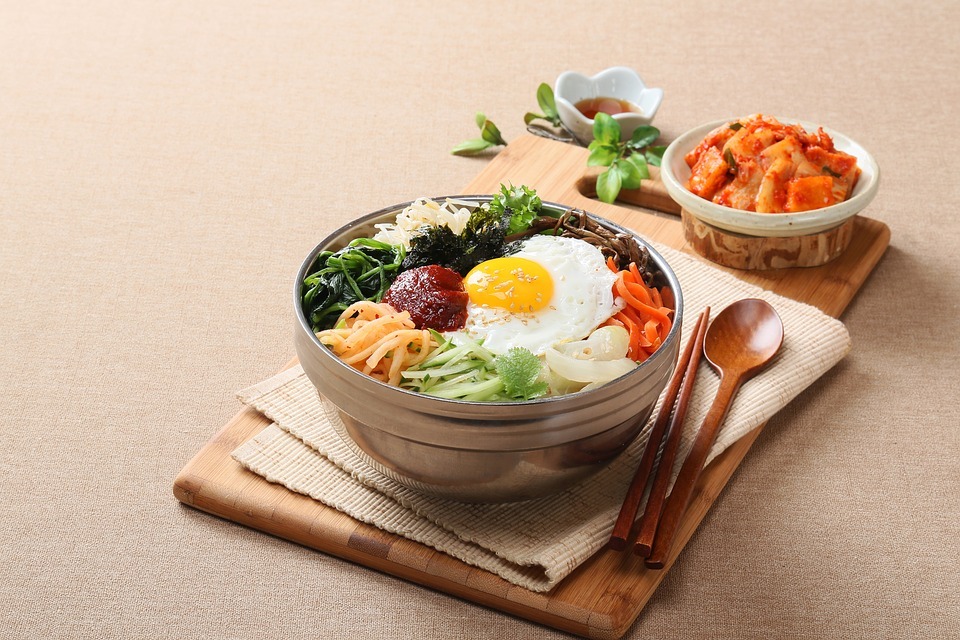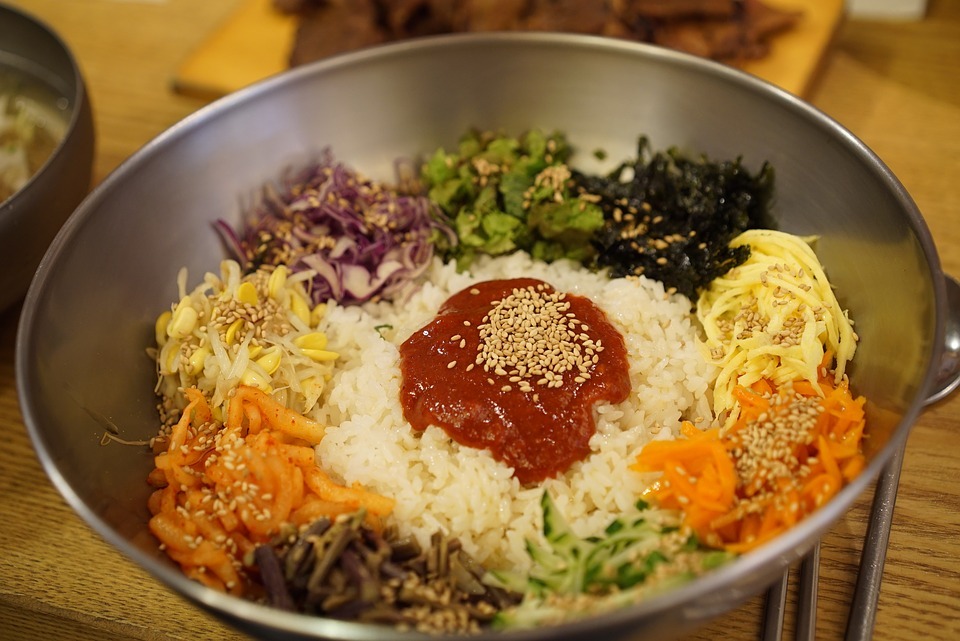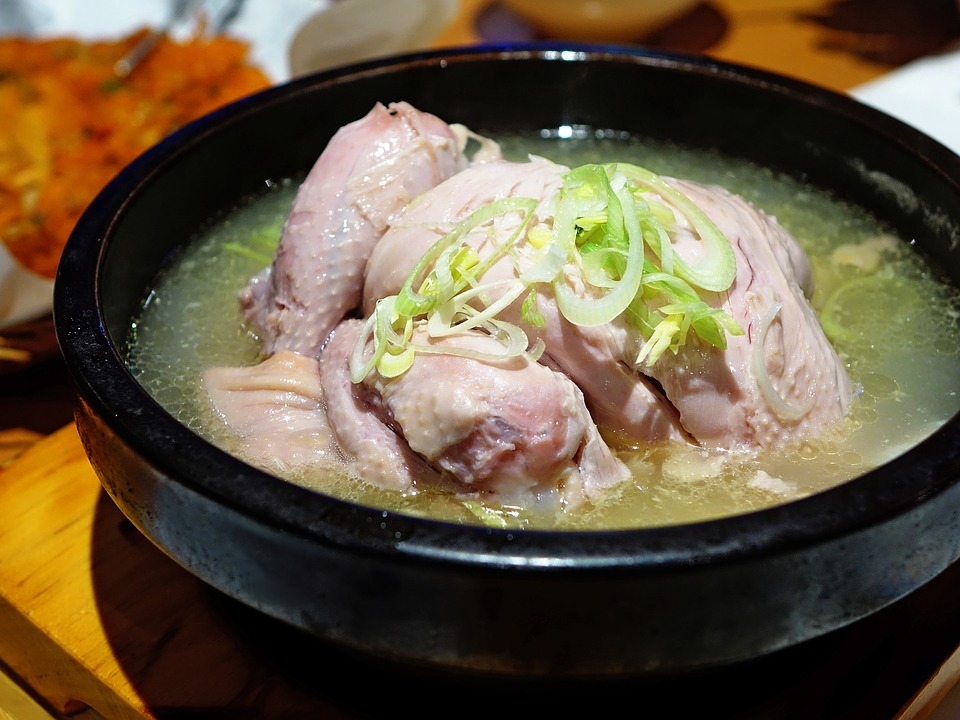Korean cuisine is famous for its array of savory and spicy dishes that usually made from different varieties of meat and vegetables available in Korea.
Some people may be familiar with the popular ones like kimchi, but there are more tasty dishes that Korean cuisine can offer besides the famous fermented vegetable side dish. Here are 10 of the best Korean dishes to try once you go to South Korea or in any restaurant specializing in Korean cuisine.
Bibimbap
A popular lunch and dinner dish, bibimbap consists of a bowl of rice that is topped with gochujang (spicy red chili pepper paste), ganjang (Korean soy sauce), mushrooms, beef, fried egg, and namul (vegetables sautéed and seasoned with spices)
After being served the bibimbap, people usually mix all of these ingredients before eating. The term “bibimbap” comes from the two words “bibim” and “bap” which are translated in English as “mixed” and “rice” respectively.
Nakji-bokkeum
Arguably the most ordered stir-fried dish in Korea, Nakji-bokkeum uses the long arm octopus as the main ingredient.
A species found in Korea, Japan, and China, the long arm octopus is a common ingredient used in grilling and stir-frying. The octopus can also be served raw after being mixed with sesame seeds and sesame oil.
Nakji-bokkeum was first invented by Park Mu-Sun in 1965 at the Korean Export Insurance Corporation in Seoul. After introducing the dish to the corporation, Park Mu-Sun opened the Wonjo Halmeoni Nakji Center in 1972 to start selling the tasty bokkeum dish to the public.
Bulgogi
Also known as marinated beef or pork barbecue, bulgogi is a popular Korean dish in barbecue restaurants all around the country. Bulgogi is made by marinating slices of pork or beef in ganjang, sugar, garlic, black pepper, and sesame oil.
After the marinating process, the meat is then grilled and served with chopped onions and green peppers. Koreans normally eat bulgogi by putting a little bit of ssamjang (a spicy sauce made of soybean paste, gochujang, garlic, and green onions) and wrapping it in a large piece of lettuce called ssam.
Samgyeopsal
Another popular dish in Korean barbecue restaurants, samgyeopsal is made from pork belly slices that are not marinated, unlike the bulgogi. The word samgyeopsal means “three-layer flesh,” a name given to the dish due to the layers of fat and lean meat seen in slices of the pork belly.
Same with the bulgogi, samgyeopsal is also typically eaten by wrapping it with lettuce.
Yangnyeom-chikin
The yangnyeom-chikin, also called seasoned chicken outside Korea, is a variant of Korean friend chicken coated in a gochujang-based sweet and spicy sauce.
Korean fried chicken is usually fried twice; a process that sets it apart from its American counterpart. This cooking technique is used not only to make its skin crispier but also to reduce the chicken’s grease.
It is also interesting to note that fried chicken is a staple anju dish. Anju is a term used for Korean dishes that are served in drinking parties.
Haejang-guk
After a night of drinking with friends, Koreans usually eat haejang-guk in the morning to ease their hangovers.
Appropriately named “hangover soup,” haejang-guk is made with Napa cabbages and different kinds of vegetables and meat that are contained inside a bowl of broth. If you want the soup to be more obscure, there is another type of haejang-guk you should eat called the seonji-guk, which has slices of coagulated ox blood included in the soup.
Even if you don’t have a hangover, you should try the haejang-guk whenever you want to eat something comforting.
Samgye-tang
If you want to eat a more traditional soup, there is the samgye-tang that has a whole young chicken or a poussin inside the bowl of soup. Along with the chicken, the soup also has garlic, jujube (red date), ginseng, and rice as its ingredients.
Because of its very nutritional ingredients, samgye-tang is considered as one of the healthiest dishes in Korean cuisine.
Tteok-bokki
Tteok-bokki is another favorite Korean side dish that contains rice cakes, an ingredient made from non-glutinous rice formed into long cylinders. This dish can also be served with gochujang, fish cakes, scallions, or eggs.
Also, there is a non-spicy variant of the dish called the gungjung-tteok-bokki, which doesn’t use gochujang as its sauce; instead, it uses ganjang.
Hotteok
A well-known snack in South Korea, hotteok is a kind of pancake that has a filling of sweet syrup made from honey, brown sugar, cinnamon, and bits of peanuts.
The hotteok’s dough consists of wheat flour, milk, water, and sugar. Yeast is then applied to the mixture before being molded into dough. After letting it rise for a few hours, the dough is then cut into small pieces and filled with the sweet syrup being formed into small balls. The balls are then pressed flat and cooked on a griddle.
Japchae
Japchae, also called stir-fried glass noodles, has cellophane noodles called dangmyeon as an ingredient. This type of noodle is formed using sweet potato starch and is dried to be packed in plastic bags. The dangmyeon is then soaked in hot water to soften and can be used in soups or dry noodle dishes like the japchae.
This dish has a sweet taste, thanks to the soy sauce incorporated into the noodles. These noodles are usually mixed with strips of beef or chicken meat and stir-fried vegetables for better flavor.
Japchae was once known to be a dish only served to the royal family and the elite, but today they are eaten as either a main dish or a side dish (banchan) during special occasions like birthdays or weddings in Korea.





